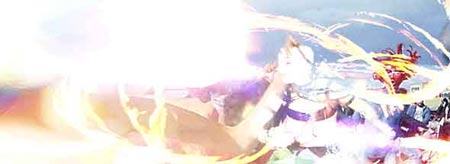BY LETTER
What the Thunder Said
Culture and Society > Intertoposophic Relations
Culture and Society > Myths and the Unexplained
Culture and Society > Fine Arts > Narrative
Culture and Society > Metaphysics > Philosophy
Culture and Society > Myths and the Unexplained
Culture and Society > Fine Arts > Narrative
Culture and Society > Metaphysics > Philosophy
 Image from Bernd Helfert |
What the Thunder Said is an interactive compilation of the many contradictory and baffling answers that transapients have given to some of the unsolved questions that still baffle ordinary sophonts. It includes thousands of topics and subtopics: everything from more recent puzzles such as the truth concerning the Fermi Paradox or the nature of the different toposophic levels to older questions that have plagued thinkers as far back or further back than the beginnings of civilization itself such as the existence and nature of the soul, or whether life has any meaning or purpose. It was hardly the first such compilation, and certainly was not the last, but it is arguably the most famous. Most critics believe that its broad and continuing appeal rests on the passion and poetry of the translations, and the sensitivity that the author gave to the selection and arrangement of the questions and their several answers.
The creator of this work was the renowned Menno Singh, the beloved author of Whose Hu is Who and co-author of Tales for Young Sophonts of All Ages. It was his first work in the more than seven decades of silence that followed the death and destruction of his wife and collaborator of over 300 years. She had been destroyed in the horrific qlippothic transcension event that claimed over 53 million residents and vacationers on the Xanadu vacation habs in 6321 AT. Singh's life was forever changed by that loss. In the aftermath he sought first to find some uncorrupted trace or record of his beloved. When he failed in that quest he conversed with transapients all over the Terragen sphere in an attempt to come to some understanding of the event. What The Thunder Said began as notes Singh made in his personal journal during these journeys.
Singh's compilation and arrangement is as baffling and frustrating as the transapient answers themselves, but it is also oddly comforting to most readers. Many claim to sense some larger pattern in the welter of contradictions that the work presents, though there has never been any consensus as to what this pattern may be. This powerful and subtle effect on the emotions and understanding has survived many translations and revisions. Its appeal is broad and enduring. It is well known among Solarists and Negentropists, whose leaders have issued statements indicating that the faithful may find the texts illuminating. It is favoured by a very large number of religions, AI-lead or otherwise, and by many individual sophont level entities in polities as diverse as Metasoft or the Zoeific Biopolity. Perhaps surprisingly it is equally widely read in various Hider cultures and by fringe anti-transapient groups. Though it was originally intended for an audience of human nearbaselines and superiors it is widely appreciated in many of the cultures of nonhuman clades.
The continuing popularity of What the Thunder Said has fueled entire schools of literary criticism. It has also, because of the reference in its title, sparked the occasional revival of interest in First Century BT literature. Over the years, and most especially in the centuries following its first release, What the Thunder Said inspired any number of inferior imitations, particularly among the less sophisticated of the Godwatchers and amateur sophontologists. These were parodied in Ayodele Xiang-Smith's bitingly funny Who Wants to Know? which is justly famous in its own right.
What the Thunder Said was Singh's last artistic work as a sophont. In the decades after its release he returned to his religious roots, and took up charitable work along what was then the fringe of the Terragen sphere. His co-religionists still regard his sophont form as an exemplar, and pilgrimages to the places at which he is known to have resided are common.
Singh retired in the end to a monastery in the Sophic Sphere, and at some later date apparently sought and achieved transcension to the first toposophic. When his transapient descendant was eventually located and asked about Singh's work, the answer was as difficult to comprehend as any in Singh's original collection. Whether that statement constitutes a confirmation or a condemnation of What the Thunder Said or is something else entirely is still a matter of dispute. It is sometimes included as an addendum to the original, especially in annotated versions. Many argue that these amended versions are flawed, and detract from the intended effect of the first release.
Related Articles
Appears in Topics
Development Notes
Text by Stephen Inniss
Initially published on 29 August 2007.
Initially published on 29 August 2007.






